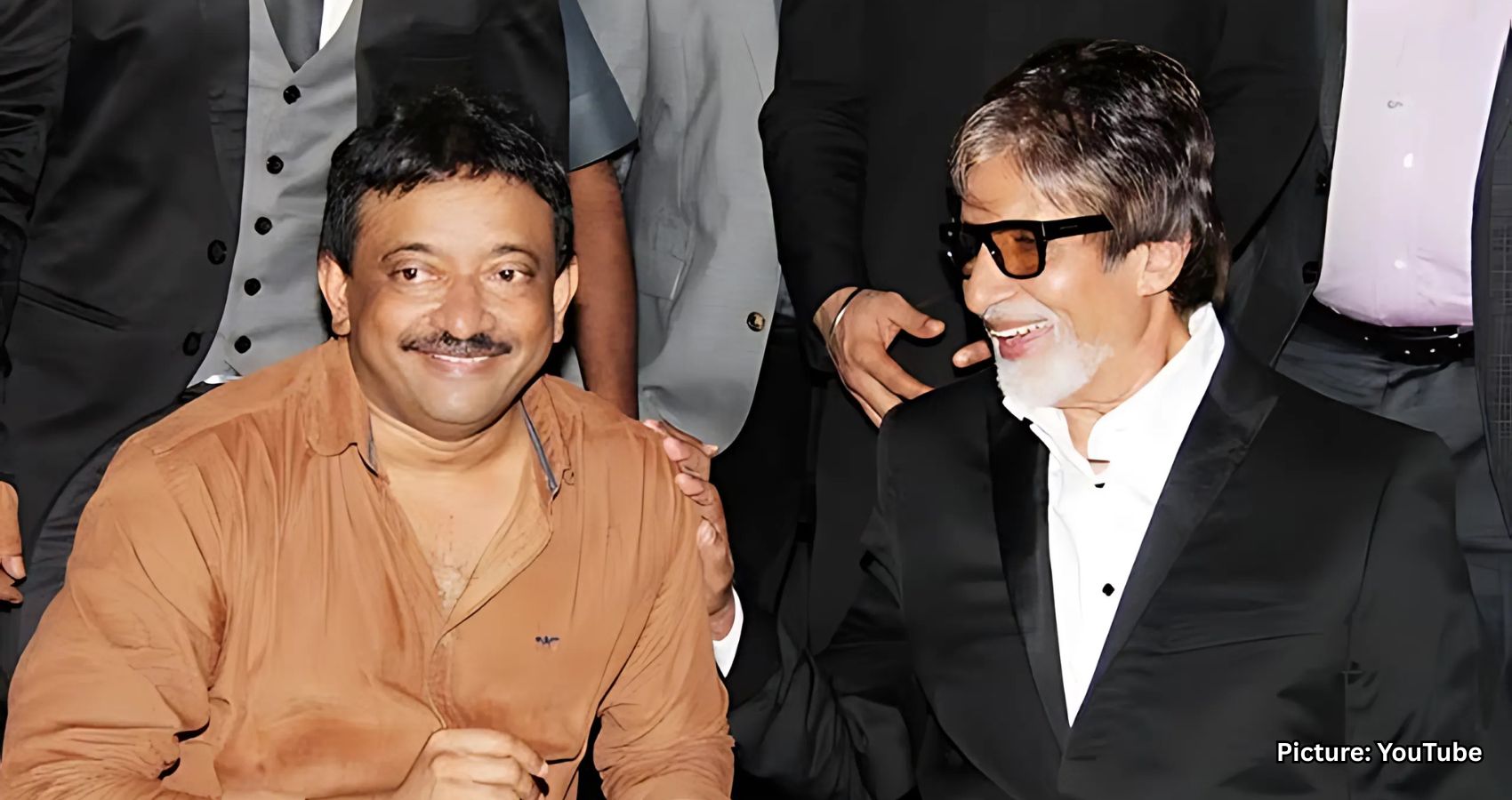Veteran filmmaker Ram Gopal Varma has offered a frank and insightful take on the origins of superstardom in South Indian cinema, asserting that the rise of several iconic actors from the region in the 1970s and 1980s was significantly influenced by remakes of Amitabh Bachchan’s classic Hindi films. In a detailed interview with IndiaTV Showbiz, Varma pointed out that all four major South Indian film industries—Tamil, Telugu, Kannada, and Malayalam—saw immense benefits from recreating the Bollywood legend’s work.
He named prominent actors such as Rajinikanth, Chiranjeevi, NT Rama Rao, and Rajkumar as direct beneficiaries of this wave. According to him, many defining moments in their careers came through roles that were essentially southern adaptations of Amitabh Bachchan’s powerful on-screen portrayals. These films, Varma noted, helped these actors rise to a level of stardom that made them not just celebrities but revered figures among fans. “They became cultural icons and, eventually, demigods,” he said, emphasizing the transformative impact of these remakes.
Elaborating further, Varma described how the South Indian industries actively embraced the “mass entertainer” formula that Bachchan had championed. Unlike Bollywood, which saw shifts in the 1990s due to the actor’s temporary hiatus and the growing influence of music companies, Southern cinema remained steadfast in its commitment to this formula. Varma argued that this approach played a critical role in solidifying the stardom of South Indian actors during that period.
He pointed out that the five-year break Bachchan took in the 1990s coincided with a changing Bollywood landscape. During this time, music companies increasingly began financing films primarily to promote their soundtracks, with Maine Pyar Kiya cited by Varma as a landmark example of this transition. As Bollywood moved in a new direction, South Indian cinema doubled down on the “masala” film structure that had been influenced by Bachchan’s earlier work.
“The South never stopped making the so-called masala films,” Varma remarked. This, he suggested, was key in helping actors like Rajinikanth and Chiranjeevi maintain and grow their appeal across generations. He emphasized that these remakes weren’t mere copies but carefully crafted vehicles designed to fit the regional flavor while leveraging tried-and-tested story arcs that resonated with audiences.
Another layer to Varma’s analysis was the difference in filmmaking philosophies between Bollywood and the South. He noted that while Bollywood directors, particularly in the 1990s, often came from urban, English-speaking backgrounds and were more attuned to global cinema, Southern filmmakers stayed rooted in the ground realities of their audiences. “They’re very close to the ground root,” Varma observed, implying that their storytelling remained more direct, accessible, and emotionally resonant with everyday viewers.
To illustrate his point about the unpredictability of audience reception and the disconnect between industry insiders and actual viewers, Varma shared a telling anecdote about Pushpa: The Rise, directed by Sukumar and starring Allu Arjun. He recalled that just before the film’s release, a producer—whom Varma did not name—watched the film and dismissed its chances of success. The skepticism, according to Varma, had little to do with Arjun’s acting and everything to do with the character’s unconventional traits.
“He was not referring to the actor,” Varma explained. “They are so used to good-looking six-pack heroes… that they can’t comprehend a hero chewing paan.” This, he argued, was a classic example of how film industry professionals often impose their own standards on what they believe audiences will accept, ignoring the broader cultural dynamics at play.
This anecdote fed into Varma’s larger point about how preconceived notions can sometimes prevent genuine innovation in cinema. Rather than assessing a character or story based on its potential to resonate with viewers, many producers and filmmakers rely on rigid formulas, often underestimating the audience’s openness to new ideas.
Beyond individual anecdotes and industry patterns, Varma’s reflections also touched on a broader and often under-discussed reality: the prevalence and importance of remakes in Indian cinema, especially during the earlier decades. He highlighted that while Bollywood today is frequently criticized for recycling old ideas, South Indian cinema, too, once heavily relied on remakes. However, Varma was quick to clarify that this wasn’t necessarily a sign of creative fatigue.
According to him, in the 1970s and 1980s, when a fresh and successful concept emerged—regardless of the language—it was rapidly adopted and adapted by filmmakers in other regions. “The culture of adaptation,” as Varma described it, was more a strategic creative exchange than a lack of originality. It enabled cross-pollination of ideas and helped shape some of India’s most enduring cinematic icons.
He noted that back then, original scripts were relatively rare across the Indian film landscape. Success was often built on how well an idea could be translated into a new cultural and linguistic setting. In that sense, Varma argued, the creative choices that directors and actors made during those decades were pragmatic rather than derivative. They ensured wide appeal while allowing regional talent to rise by stepping into roles proven to work with audiences elsewhere.
Reflecting on this legacy, Varma said that while the filmmaking environment has changed drastically in recent years, the impact of that era still echoes in today’s storytelling approaches. The groundwork laid by those adaptive strategies helped create stars whose influence persists, and the storytelling format continues to draw from those roots.
In summary, Ram Gopal Varma’s interview offered a unique and clear-eyed view of the interconnected histories of Bollywood and South Indian cinema. His assertion that legends like Rajinikanth and Chiranjeevi owe part of their early success to Bachchan’s legacy sheds new light on how stardom in India was crafted—not just through originality, but through thoughtful adaptation. As Varma’s analysis shows, cinema is often a mirror to the cultural and commercial forces behind the screen, and sometimes, a borrowed reflection can shine just as brightly as the original.

